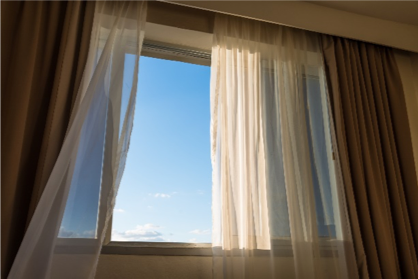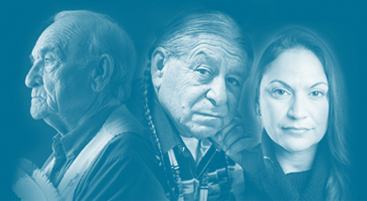Supporting Native Veterans
|
Native Veterans are often younger than Veterans of other races and more likely to have a disability and post-traumatic stress disorder.
At the same time, Native Veterans are more likely than Veterans from other ethnic groups to lack health insurance. You can show your support this month by increasing their awareness of available benefits.
Refer to the CMS brochure, Support for Veterans (PDF, 501 KB, 2 pp), for information about the different kinds of health coverage Veterans can get from Indian Health Service (IHS), the Department of Veterans Affairs, Medicare, and Medicaid. |
 |
National Native American Veterans Memorial, Washington, DC
|
|
| | | | |
| | |
LTSS resources for Native Veterans
| |
| | | Long-term care needs for Native Veterans can be high. Find information about helping Native Veterans access LTSSon the CMS Tribal LTSS Technical Assistance Center.
- The Veterans LTSS webinar series includes details about how to work with the Department of Veterans Affairs (VA) Office of Tribal Government Relations, how VA and IHS work together, and the kinds of LTSS available to rural Veterans.
- LTSS Research: LTSS for Native Veterans (PDF, 3.3 MB, 38 pp) offers an overview of LTSS needs among Native Veterans, barriers to care, efforts by IHS and VA to improve access to care, and recommendations to enhance care.
- Veterans' care profiles highlight how the Ho-Chunk Nation, Lac Courte Oreilles Elder Services, and the Native American Veterans Association are helping Veterans access care.
| |
|
Support for family caregivers
|
Caregiver support services contribute to the success of many LTSS programs. In tribal communities, caregivers for elders and people with disabilities are often family members. These family members may be unaware of the supports available to them.
- what is needed to support caregivers
- program profiles of tribal LTSS programs and
- webinars and related research regarding caregiver support
Additionally, highlighting November as National Family Caregivers Month, a new poster (PDF, 175 KB, 1 p) from the Caregiver Action Network offers tips to make caregivers' lives more manageable. |
|
|
| |
|
| |
|
Age+Action Conference: Call for proposals
|
|
|
This year, the conference will focus on women's aging experience and innovative solutions that support aging well. The Age+Aging Conference provides opportunities for participants to partner and explore the changing realities of aging.
|
| |
Helping elders adjust to seasonal changes
|
Some research suggests that decreased exposure to sunlight during the fall and winter months causes changes in mood and behavior. Commonly called winter blues, the changes include decreased interest in activities, excessive sleepiness, increased appetite, and cravings for carbohydrates.
Elders who are especially at risk for winter bluestend to be homebound and have restricted mobility. Help lower that risk by sharing these tips with caregivers: |  |
| |
- let more light into the spaces where elders spend most of their time – open blinds and curtains daily and, if possible, move beds closer to windows
- weather permitting, sit or walk with elders outside
- consider adding plants or brightly colored accent pieces to an elder's home
|
|
| |
|
Planning care for people with dementia
|
Encourage families to start discussing care when their family member is in the early stages of dementia. These conversations can guide families as they make treatment choices for their loved one.
Early conversation can help newly diagnosed patients and families better understand:
|  |
| |
|
|
|
| |
|
Redesigned Eldercare Locator website
|
 |
The Administration for Community Living's redesigned Eldercare Locator connects older adults and their caregivers to nearby aging resources. Users can access the website from a smartphone, tablet, or computer. It features a geographical search bar, frequently asked question section for caregivers, and a "Learn More About" section on popular topics. |
| |
|
| |
|
Funding opportunity: Reduce gaps for AI/AN health data
|
|
|
Partner with Tribal Epidemiology Centers to better understand the health and health disparities of American Indian and Alaska Native (AI/AN) populations. The National Institutes of Health is running this program to reduce significant gaps in data that stem from AI/AN populations being relatively small and diverse.
|
| |
| Join the conversation on LinkedIn
Want to learn more about or discuss LTSS in Indian Country? Looking to connect with others working in the same field? Join the Tribal Affairs Group on LinkedIn and join the conversation. |
|
|
|
|









No hay comentarios:
Publicar un comentario